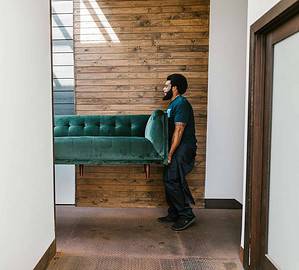
A home renovation isn’t something that you can do on a whim. It requires a lot of careful planning. The more effort you put into the planning process, the smoother your renovation is likely to go.
How can you start? Follow these essential tips.
Make a Budget:
One of the first things that you should do when you’re planning a home remodel is to make a budget. Without a budget, you could easily overspend and complicate the whole remodeling process. You might find yourself running out of money before you’re even finished. You might have to put projects on pause until you get more money — which could take months or even years to do.
So, put together a general home remodel budget as soon as possible. You should take a look at the average costs for renovation projects to see how much you can expect to spend on your remodel. You can also contact contractors in your area to ask for quotes for their services.
It’s always wise to leave yourself an extra cushion of 10-20% in your budget. This cushion can stop you from going overbudget because of unanticipated expenses. For instance, maybe your contractor finds that you have black mold in your basement that needs to get removed or they find signs of a mouse infestation behind your walls. That cushion can help you pay for these emergency expenses right away and get back on track.
Without that cushion, you might not have enough savings on hand to tackle a surprise expense. You may have to turn to an alternative payment method to recover from the problem. You could use your credit card, or you could go to a website like CreditFresh to apply for a fast online loan with a quick application process. If you get approved for a fast online loan, you can use the borrowed funds to manage the surprise expense and then follow a payment plan afterward. It’s that simple.
Fast online loans should only be used for emergency purposes. They are not meant for regular remodeling expenses.
Prepare Your Space:
Are you going to live in your house while it’s being renovated? Lots of people do it, but that doesn’t mean it will necessarily be easy. You may find yourself in a dust-filled structure littered with construction materials and half-finished projects. You might not have regular access to water, electricity or natural gas. You might not be able to use certain areas of the house altogether, like your kitchen, which can make storing and preparing food very difficult.
So, if you’re determined to stay in the house during the entire renovation, you will need to take some steps before construction begins:
- Get plastic dust barriers for doorways and entrances.
- Seal air ducts with plastic covers.
- Add air purifiers to rooms to improve indoor air quality.
- Get a wet-dry vacuum to help you clean up after construction.
- Get compact cooking appliances that you can use when the kitchen is being renovated, like hot plates and mini-refrigerators.
You could always move out while the renovation is still in progress. You could temporarily rent an apartment, book an Airbnb or stay at a relative’s house until the most invasive home projects are complete. This decision will reduce your stress, but it will add to your overall budget.
Move Items into Storage:
It’s unwise to tackle any construction projects inside a fully furnished home. You’ll want your rooms to be relatively empty. Not only will this make it easier to complete your construction, but it will also protect your belongings from damage.
So, part of your planning process should be finding a safe storage facility in your neighborhood. Be sure to get a storage unit that has proper temperature controls and security features. Then, collect your items and move them into this temporary storage facility. Put as much as you can into your unit.
Before you break down walls or tear up carpets, you should follow these planning tips. You’ll start off your home reno on the right foot.



